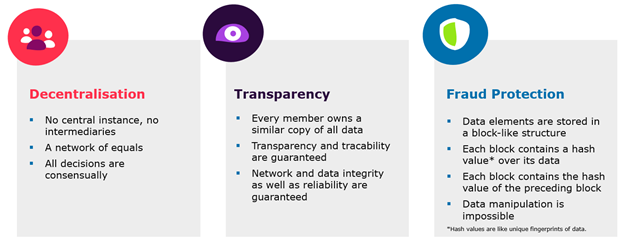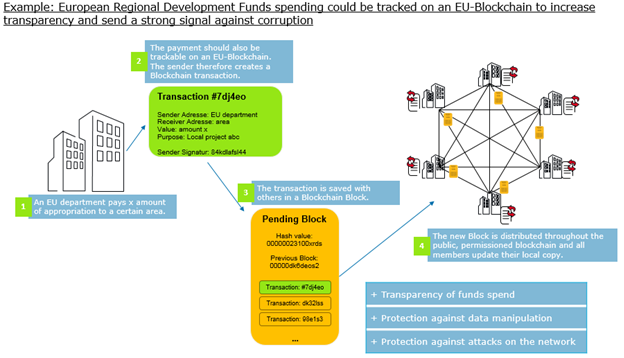Open Data and Blockchain: a match made in heaven?
On Blockchain and Open Data
Blockchains, cryptocurrencies and distributed ledger technologies: many things have been said (positive as well as negative) about this emerging technology. A wild bunch of ideas has been brought forward and blockchains are said to have disruptive potential in a wide range of industries such as banking, logistics and public services. But how does this relate to Open Data? A quick internet search will reveal that little research has been done on this matter. It becomes relevant therefore to look at the core characteristics of blockchains and how Blockchain and Open Data could complement each other.
What's all the fuzz about?
A short introduction to Blockchains Blockchains are gaining traction and their three core qualities are the main reason why:
- decentralised and shared control of transactions over a network
- absolute transparency, and
- protection against fraud.

Members of a blockchain share the administration of the network. In other words, a single, centrally organised administrator (aka the intermediary) is no longer needed. All members must save and continuously update a full copy of the blockchain database. This strong redundancy, in combination with cryptography and shared decision making (called decentralised consent), leads to a democratic system that offers transparency and traceability, protection from manipulation, data integrity and security, as well as network reliability to its members. Blockchain networks can be completely open for everyone to join with a full permit to read and write on the blockchain (called a public, permissionless blockchain). In many cases, it makes sense to at least include authentication of members (public, permissoned) or even to keep the network exclusive for a limited number of members (private blockchain, i.e. cooperating companies or government organisations). This is usually necessary if sensitive or private data will be saved on the network.
An example of how the Blockchain technology can be used in the European Union context is depicted below.

Win-Win? Could Blockchain and Open Data work together?
When looking at Blockchains in an Open Data context a couple of things instantly catch the eye.
Firstly, Blockchains are especially useful to help overcome organisational and technological boundaries between entities that have to (or want to) automate the exchange of data. In this regard, blockchains are also very useful in federal systems such as Germany or the European Union. Each member of the European Union acts as one or more members in a blockchain network and shares its data with the others over the joint blockchain. Through the use of blockchain (instead of a chosen, centralised authority that controls and administers the system and its data) each member keeps the authority over its own data and nobody has to take full responsibility for the security and maintenance of the system. Members choose what data to share in the decentralised system and what not to.
Secondly, blockchains provide strong data security and are highly resilience against cyberattacks. Both these qualities are desirable in Open Data platforms, because they build a foundation of trust on the data. As data in a blockchain system is redundantly stored (remember, each member has a local copy of the chain), it is also possible to simply save a hash value of a certain data set. This could also be thought of as a unique fingerprint of the data. This way the blockchain size is controllable as hash values are very small (actually much, much smaller than saving the actual data). The integrity of the data can always be proven through the immutability of blockchain entries. In fact, one of the few known initiatives on Open Data and Blockchain by the City of Vienna does just that: citizens and public offices can validate and keep track of changes in data sets by comparing them with hash values on a public, permissioned blockchain. This way the veracity of data is ensured and "fake"-News can be kept at bay.
At the same time, Open Data with its strong focus on "openness" seems like the perfect application for Blockchain as a lot of privacy concerns, that usually bother Blockchain use cases, are non-issues.
Furthermore, Blockchain and Open Data share similar principles such as the promotion of transparency, equality in information knowledge and access, as well as the reorganisation of data exchange between a number of parties.
See what the future brings! Exploring the chances of Blockchain and Open Data
As intriguing as the combination of Blockchain and Open Data might seem, not much has been done at this point and a lot more research on possible use cases as well as a closer examining of the chances and risks need to be done. Blockchain is a technology that needs to be explored to be fully understood. If you feel like you have an interesting idea, just get cracking. Blockchain prototypes can easily be developed with the help of open source frameworks, a few cloud servers or containers and a small, motivated team of developers. Think big, start small and extend!
